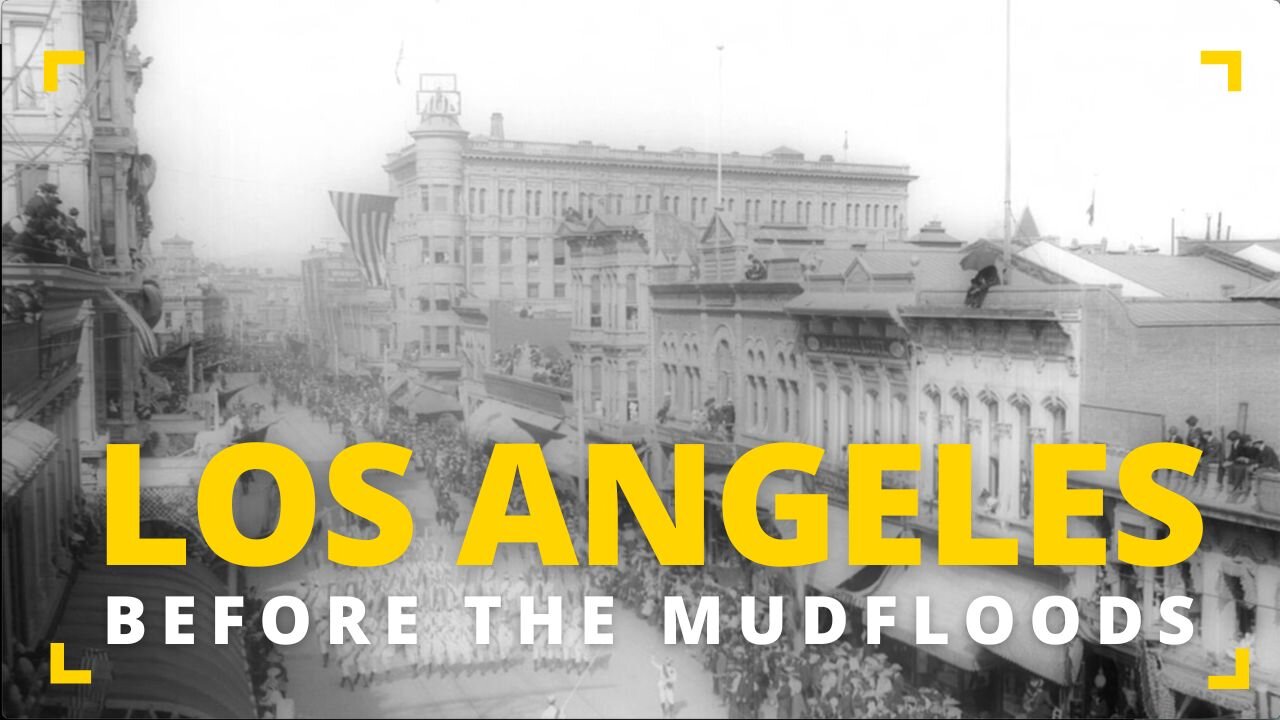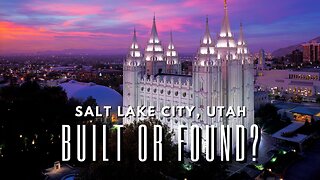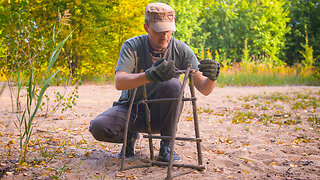Premium Only Content

Los Angeles, California BEFORE the Mud floods - 1st Photos (1864-1909)
Today we will dive into a vast collection of images, considered to be the first photographs ever taken of Los Angeles, California. Beginning the deep dive is a very intricate map detailing Los Angeles as it appeared in 1871, and we will follow this up with over 100 photographs of the fledgling city of Los Angeles from the years 1864 through 1909.
Immaculate architecture aside, the landscape is filled with unique properties, beauty both naturally occurring and man-made, and we will look at many locations of Los Angeles photographed for the first time in history. The images today are at least 115 years old, and I compiled this collection from months of research into Los Angeles; through museums, libraries, private collections and online forums dedicated to architecture.
SOURCE
Jarid Boosters
THE NARRATIVE: Los Angeles and it's Diverse History
---
1781: The history of Los Angeles began when 44 settlers from central New Spain (modern Mexico) established a permanent settlement in what is now Downtown Los Angeles.
1887: A great speculative land boom occurred, driving up the price of city land 500 percent. Monrovia became Los Angeles County's fourth incorporated city. Whittier was settled by a group of Quakers. Burbank and Glendale were incorporated.
1888: Pomona, South Pasadena, and Compton were incorporated as cities. Long Beach was also incorporated for the first time, but was disincorporated years later in 1897.
1889: After 20 years of political maneuvering, voters in the southern portion of Los Angeles County elected to break away to form Orange County, California.
1890: The U.S. Census recorded 50,395 people in the City of Los Angeles and 101,454 people for all Los Angeles County. The first Tournament of Roses Parade was held in Pasadena.
1895: The Los Angeles City Oil Field was discovered, becoming California's top-producing oil field.
THE NARRATIVE: Architectural and Infrastructure Landscape
---
SPANISH COLONIAL INFLUENCE: The early architectural landscape of Los Angeles was heavily influenced by Spanish colonial designs, reflecting its historical roots. The iconic missions, with their arched corridors and red-tiled roofs, set the stage for the city’s built environment.
LATE ADOBE, GREEK REVIVAL, STICK STYLE, SECOND EMPIRE & ITALIANATE STYLES: After California joined the union as the 31st state in 1850, buildings designed in these architectural styles began to appear. These structures represent early settlement patterns and building practices. Most of these buildings were simply constructed, using locally available materials including adobe, brick, and wood.
LUMMIS HOUSE: Charles Lummis began the construction of El Alisal, also known as the Lummis House, in 1898. Built over a twelve-year period ending in 1910, the structure was constructed by Lummis using stones gathered from the Arroyo Seco with the assistance of a few Native American laborers he had trained in carpentry.
GAMBLE HOUSE: The Gamble House, a prime example of an "ultimate bungalow" due to its large size and depth of detail, was designed by architectural firm Greene and Greene for David B. Gamble (of Proctor & Gamble). The home was constructed between 1908 and 1909.
FREIGHT DEPOT: One of the earliest local examples of reinforced concrete buildings is a quarter-mile-long former freight depot that was constructed in 1907. It now serves as the campus of the Southern California Institute of Architecture (SCI-Arc).
THE NARRATIVE: Notable Public Buildings
---
PICO HOUSE: Built in 1869 by Pío Pico, the last Mexican governor of California, Pico House was the finest hotel in Los Angeles at the time.
SANTA MONICA PIER: Opened to the public in 1909, the Santa Monica Pier quickly became a popular destination. The amusement park on the pier opened 21 years later.
OLVERA STREET: Known as the oldest street in Los Angeles, Olvera Street is home to the city’s original firehouse, church, theatre, and other buildings. These structures have been brought together as the El Pueblo Historical Park.
LUMMIS HOUSE: Also known as El Alisal, this house was built by Charles Lummis between 1898 and 1910. The structure was constructed using stones gathered from the Arroyo Seco.
-
 16:25
16:25
The Aquarius Bus
3 months agoSalt Lake City, Utah. 1860. Built or Found? Again, where are the people?
1.35K6 -
 LIVE
LIVE
TheAlecLaceShow
13 hours agoLive at CPAC | Interviews with Dean Cain, Rep. Comer and more! | The Alec Lace Show
342 watching -
 LIVE
LIVE
Major League Fishing
2 days agoLIVE Tackle Warehouse Invitationals, Stop 1, Day 2
477 watching -
 LIVE
LIVE
I_Came_With_Fire_Podcast
9 hours agoNOC Spy: CIA uses SATANIC RITUAL ABUSE to make SLEEPER Cells
343 watching -
 28:42
28:42
CatfishedOnline
23 hours ago $0.85 earnedWoman Insists Morgan Wallen Relationship Isn't a Romance Scam!
6.98K -
 16:25
16:25
TSPLY
23 hours agoNew CNN / MSNBC Meltdown Moments Of Getting Mad At Donald Trump In February
12.8K6 -
 8:33
8:33
scoutthedoggie
3 hours agoAirsoft War Games Scotland
7.58K1 -
 4:56
4:56
Kirill MultitoolOfficial
1 day ago $0.67 earnedSurvival TIPS and usefull bushcraft DIY in the wild
15K2 -
 27:25
27:25
ArturRehi
1 day agoThis is How Dictatorships are Formed
8.13K1 -
 59:35
59:35
AlaskanBallistics
16 hours ago $0.28 earnedI Love this Gun Episode # 11
6.19K